
I’m excited to share some tasty recipes for the Ornish diet. This eating plan focuses on plant-based foods and limits fats. It aims to help people lose weight and improve heart health.
The Ornish diet was created by Dr. Dean Ornish. It recommends getting only 10% of calories from fat. This is much lower than most other diets. The plan also cuts out meat and emphasizes fruits, veggies, and whole grains. In this article, I’ll give you 10 great recipe ideas that fit the Ornish diet rules.
1. Vegan Spinach and Mushroom Lasagna
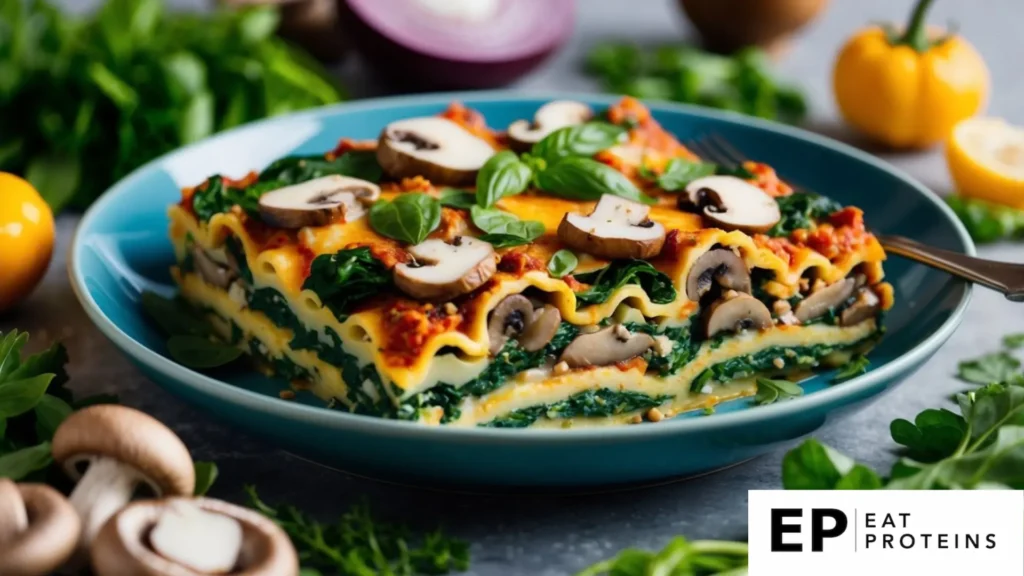
Vegan Spinach and Mushroom Lasagna is a tasty plant-based version of the classic Italian dish. It’s a great option for those following the Ornish diet, which promotes low-fat, plant-based eating.
I find this recipe fairly easy to make, even for beginners in the kitchen. The main components are lasagna noodles, spinach, mushrooms, and a dairy-free cheese substitute.
To start, I preheat the oven to 375°F (190°C). Then, I cook the lasagna noodles according to package instructions, usually about 8-10 minutes.
While the noodles cook, I sauté sliced mushrooms and spinach in a pan for about 5 minutes. I also prepare a simple tomato sauce and a cashew-based “cheese” sauce.
I layer the ingredients in a baking dish: sauce, noodles, spinach and mushrooms, and “cheese” sauce. I repeat these layers 2-3 times.
Finally, I bake the lasagna for 25-30 minutes until it’s hot and bubbly. This delicious vegan lasagna is packed with nutrients and flavor, making it a satisfying meal for anyone, not just those on the Ornish diet.
2. Quinoa and Black Bean Salad
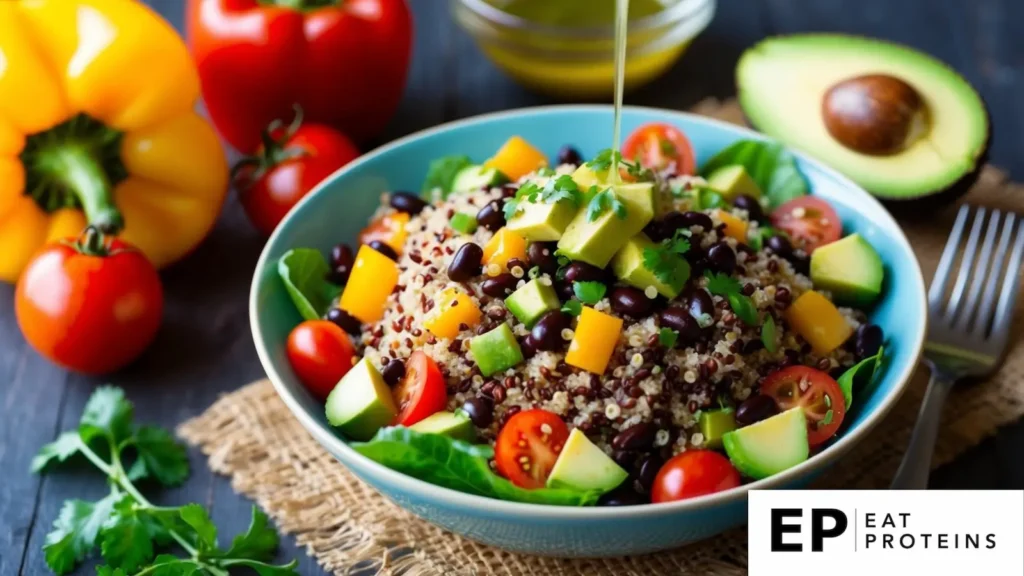
Quinoa and black bean salad is a tasty and nutritious dish that fits well with the Ornish diet. It’s packed with protein, fiber, and essential nutrients.
I find this salad easy to make, usually taking about 30 minutes from start to finish. First, I cook 1 cup of quinoa in 2 cups of water for about 15 minutes until it’s fluffy.
While the quinoa cooks, I drain and rinse a 15-ounce can of black beans. I chop some vegetables like bell peppers, tomatoes, and red onions.
Once the quinoa has cooled for 5 minutes, I mix it with the beans and veggies. I add a simple dressing of lime juice, olive oil, and spices.
This salad is versatile. I can serve it warm or cold. It keeps well in the fridge for 3-4 days, making it great for meal prep.
3. Tofu Stir-Fry with Vegetables
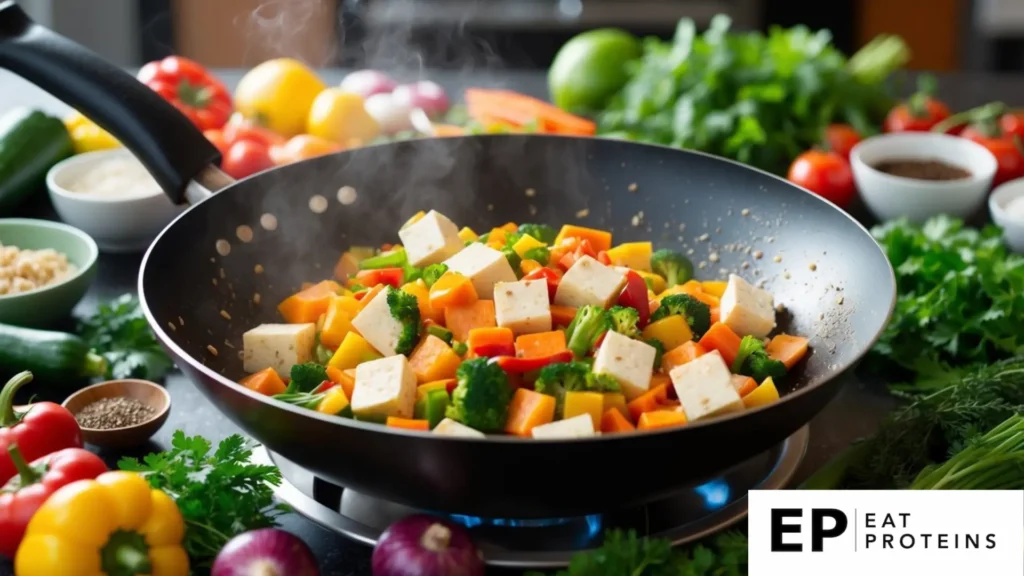
Tofu stir-fry is a tasty and healthy dish that fits well with the Ornish diet. I find it’s quick and easy to make, perfect for busy weeknights.
To start, I press firm tofu for 15 minutes to remove excess water. Then I cut it into 1-inch cubes.
I heat a tablespoon of vegetable broth in a large pan over medium-high heat. I add the tofu cubes and cook for about 5 minutes until they’re lightly browned.
Next, I add chopped vegetables like bell peppers, broccoli, and carrots. I stir-fry everything together for about 5-7 minutes until the veggies are crisp-tender.
For flavor, I mix in 2 tablespoons of low-sodium soy sauce and 1 teaspoon of grated ginger. I cook for another minute to let the flavors combine.
This dish is high in protein and fiber. It’s also versatile – I can easily swap out different vegetables based on what’s in season or what I have on hand.
4. Lentil and Vegetable Stew

I love this hearty Lentil and Vegetable Stew as part of the Ornish diet. It’s packed with nutrients and flavor.
This stew is easy to make and takes about 30 minutes to prepare. I start by sautéing onions, carrots, and celery in a large pot for 5 minutes.
Next, I add garlic, diced tomatoes, vegetable broth, and lentils. I bring it to a boil, then simmer for 15-20 minutes until the lentils are tender.
For the final touch, I stir in some leafy greens like kale or spinach. They only need to cook for 2-3 minutes until wilted.
I season the stew with herbs like thyme and rosemary. A squeeze of lemon juice at the end brightens up the flavors.
This recipe makes about 4-6 servings. It’s perfect for meal prep and tastes even better the next day.
5. Oven-Roasted Chickpea Tacos

I love these tasty and protein-packed tacos. They’re a great vegetarian option that’s easy to make.
Oven-roasted chickpeas are the star. I cook them until they’re crispy on the outside but still soft inside. It takes about 25 minutes at 400°F.
For the taco filling, I mix the roasted chickpeas with spices like cumin, chili powder, and garlic. This gives them a nice flavor kick.
I stuff the chickpea mixture into whole wheat tortillas. Then I add toppings like shredded lettuce, diced tomatoes, and a dollop of plain yogurt.
These tacos come together in under 40 minutes total. They’re filling but not heavy. Each serving has about 300 calories and 10 grams of protein.
I like to make a big batch of the roasted chickpeas. They keep well in the fridge for quick meals during the week.
6. Spinach and Avocado Smoothie

I find this smoothie to be a nutritious and delicious option for the Ornish diet. It’s packed with vitamins and minerals from spinach and healthy fats from avocado.
Making this smoothie is quick and easy. I can whip it up in just 5 minutes with a few simple ingredients.
To make it, I blend 2 cups of fresh spinach, 1/4 of a ripe avocado, 1 cup of unsweetened almond milk, and 1/2 a banana. For added sweetness, I sometimes include 1-2 pitted dates.
The spinach provides iron and vitamins A and C, while the avocado adds healthy fats. This combination helps keep me full and energized.
I blend all ingredients on high for about 60 seconds until smooth. If it’s too thick, I add a little water or extra almond milk to reach my desired consistency.
This recipe yields one serving, perfect for a quick breakfast or snack. It’s a tasty way to incorporate more greens and healthy fats into my Ornish diet routine.
7. Whole-Wheat Veggie Pizza
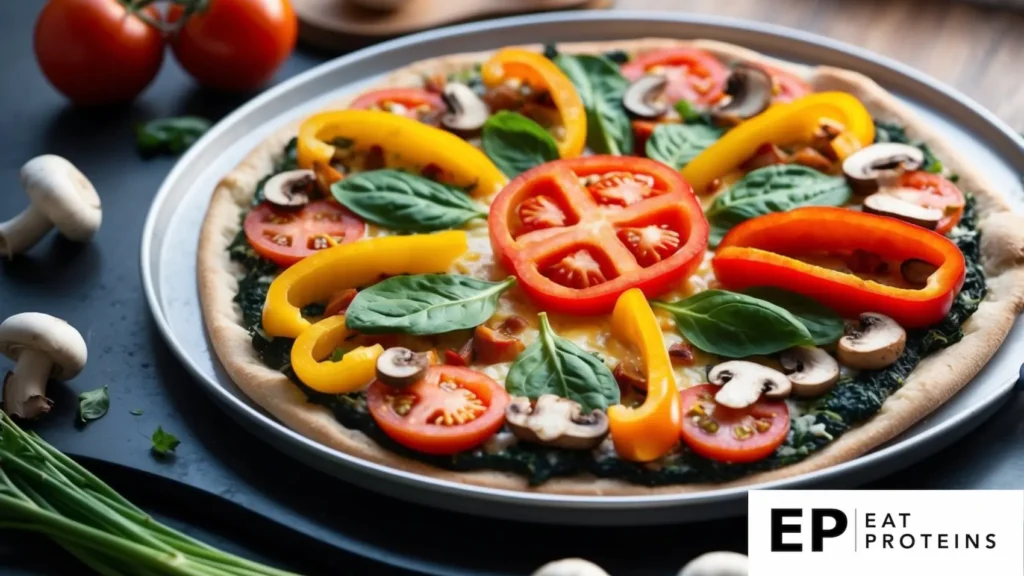
I love making Whole-Wheat Veggie Pizza as part of the Ornish diet. It’s a healthier twist on a classic favorite.
The crust is made with whole-wheat flour, which adds fiber and nutrients. I top it with a variety of colorful vegetables for extra vitamins and minerals.
This pizza is pretty easy to make. I start by preparing the dough, which takes about 15 minutes. While it rises, I chop the veggies.
For the sauce, I use a simple tomato base. I spread it on the rolled-out dough and add my chosen vegetables. Some great options are bell peppers, mushrooms, onions, and zucchini.
I bake the pizza at 450°F for 12-15 minutes. The result is a crispy crust with tender veggies. It’s important not to overload the pizza, as this can make the crust soggy.
One medium-sized pizza serves 2-3 people. It’s a satisfying meal that fits well within the Ornish diet guidelines. I find it’s a great way to enjoy a traditionally indulgent food in a healthier way.
8. Stuffed Bell Peppers with Brown Rice
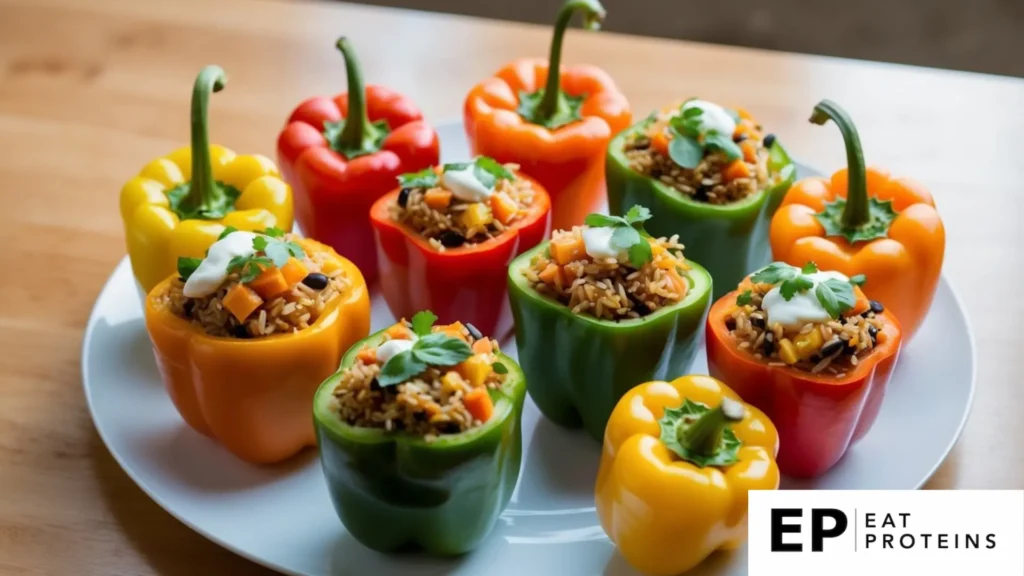
Stuffed bell peppers with brown rice are a tasty and nutritious dish that fits well with the Ornish diet. I find this recipe easy to make and packed with flavor.
To prepare, I start by cooking brown rice according to package instructions. While the rice cooks, I hollow out 4 bell peppers, removing the seeds and membranes.
I mix the cooked brown rice with diced tomatoes, onions, garlic, and herbs in a bowl. This filling is both flavorful and heart-healthy. I stuff the mixture into the peppers and place them in a baking dish.
I bake the peppers at 350°F for about 30-35 minutes. The peppers become tender and the filling heats through. For added nutrients, I sometimes sprinkle a small amount of low-fat cheese on top in the last 5 minutes of baking.
This dish is versatile. I can use different colored peppers or add other vegetables to the filling. It’s a great way to incorporate more plant-based foods into my diet.
9. Baked Sweet Potato Fries
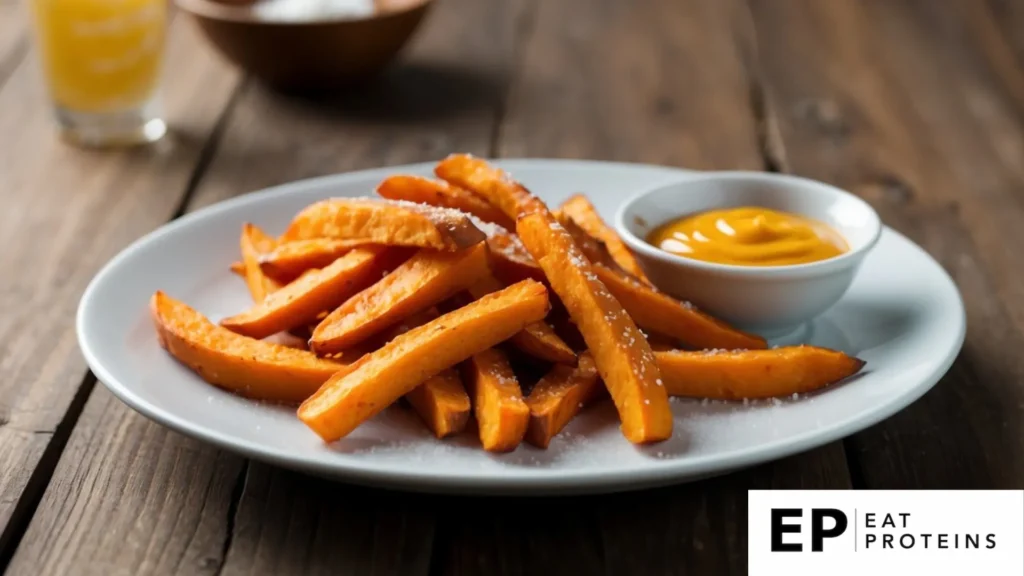
Baked sweet potato fries are a tasty and healthier alternative to regular fries. They’re a great choice for the Ornish diet, which focuses on low-fat, plant-based foods.
I find these fries easy to make. I start by preheating the oven to 425°F (218°C). Then I wash and cut sweet potatoes into thin strips, about 1/4 inch wide.
Next, I toss the strips with a small amount of olive oil and seasonings. I use just 1 teaspoon of oil per potato to keep the fat content low.
I spread the fries on a baking sheet in a single layer. This helps them crisp up better. They go into the oven for about 20-25 minutes.
Halfway through cooking, I flip the fries. This ensures they brown evenly on both sides.
When they’re done, the fries should be golden brown and crispy on the outside. The inside will be soft and sweet.
These baked sweet potato fries are a nutritious side dish. They’re high in fiber and vitamins, making them a great addition to Ornish diet meals.
10. Blueberry Oatmeal Muffins
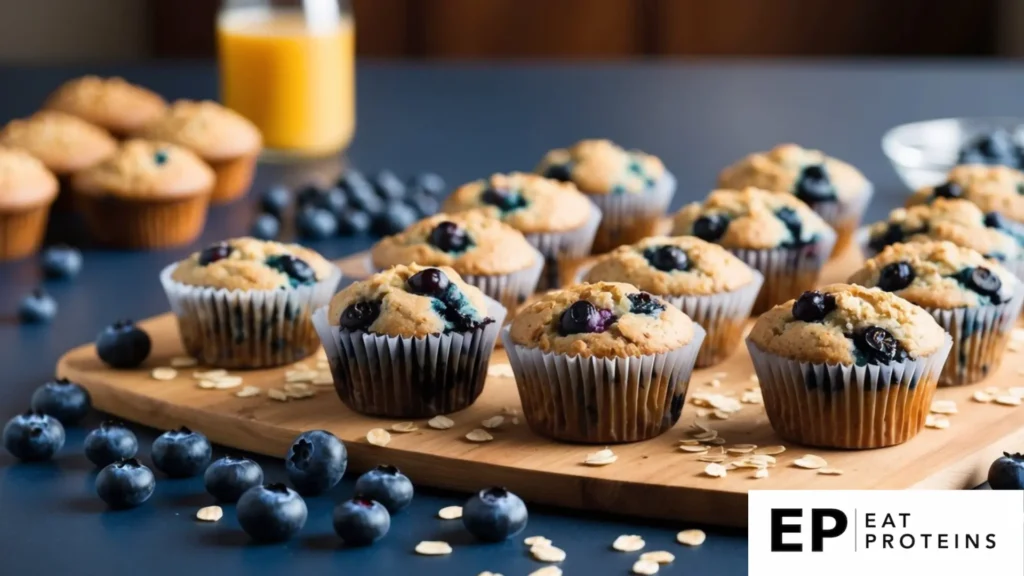
Blueberry Oatmeal Muffins are a tasty and nutritious breakfast option that fits well with the Ornish diet. I find these muffins easy to make and perfect for busy mornings.
To make these muffins, I start by mixing whole wheat flour, rolled oats, and a small amount of sugar substitute. Then I add in some plant-based milk, applesauce for moisture, and fresh blueberries.
I preheat the oven to 375°F (190°C) and line a muffin tin with paper liners. After mixing the batter, I fill each cup about 2/3 full.
The muffins bake for around 20-25 minutes until they’re golden brown. I always do a toothpick test to make sure they’re cooked through.
These muffins are a good source of fiber from the oats and whole wheat flour. The blueberries add natural sweetness and beneficial antioxidants.
I like to make a batch on Sunday and enjoy them throughout the week. They’re great on their own or paired with a piece of fruit for a balanced breakfast.
What Are the Benefits of the Ornish Diet?
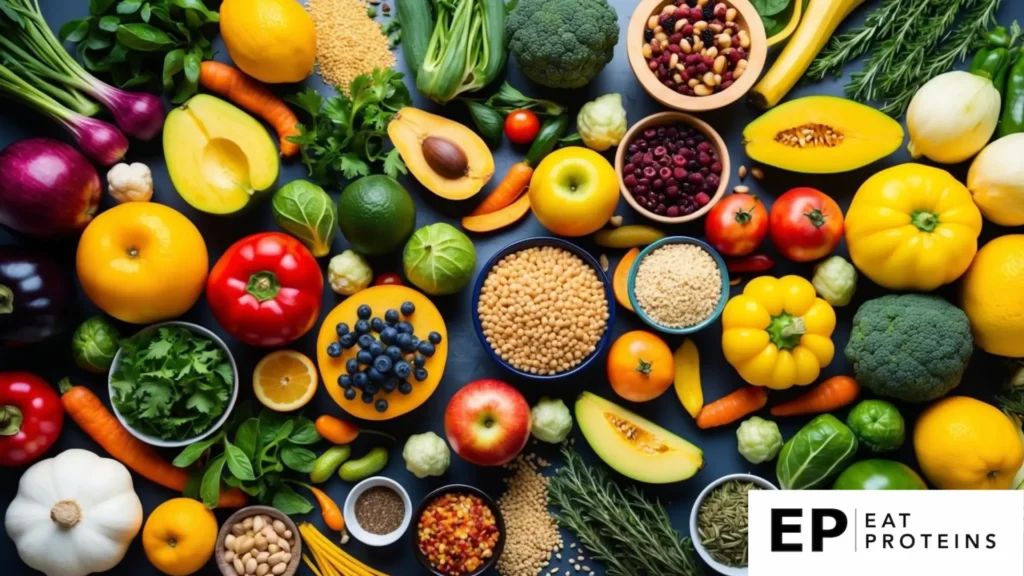
The Ornish Diet offers several health benefits. It can improve heart health, help with weight management, and boost mental well-being. Let’s look at each of these areas in more detail.
How Does the Ornish Diet Improve Heart Health?
The Ornish Diet is great for heart health. It’s low in fat, especially saturated fat. This helps lower cholesterol levels. The diet also focuses on plant-based foods. These are rich in fiber and antioxidants.
I’ve seen studies show the diet can reverse heart disease. It may even help prevent heart attacks. The plan limits processed foods too. This reduces sodium intake, which is good for blood pressure.
Eating more fruits and veggies on this diet provides lots of nutrients. These support overall heart function. The diet also encourages regular exercise. This strengthens the heart muscle.
How Does the Ornish Diet Help with Weight Management?
The Ornish Diet can be effective for weight loss. It’s based on whole, plant-based foods. These are typically lower in calories but high in nutrients. This makes it easier to feel full while eating less.
I’ve found that the diet’s focus on fiber helps with weight control. Fiber aids digestion and keeps you feeling satisfied. The plan also limits processed foods and added sugars. This naturally reduces calorie intake.
Exercise is a key part of the Ornish lifestyle. Regular physical activity boosts metabolism. It helps burn calories and build muscle. Combined with the diet, this can lead to sustainable weight loss.
How Does the Ornish Diet Affect Mental Well-Being?
The Ornish Diet isn’t just about physical health. It can also improve mental well-being. The diet promotes foods rich in omega-3 fatty acids. These are linked to better brain function and mood.
I’ve noticed that the diet’s stress-reduction techniques are helpful. They include meditation and yoga. These practices can lower anxiety and improve sleep quality. Better sleep often leads to better mental health.
The diet encourages social connections too. Eating meals with others can boost happiness. The plan’s exercise component also helps. Physical activity releases endorphins, which improve mood.
What Are the Key Principles of the Ornish Diet?
The Ornish Diet focuses on plant-based eating, low-fat foods, and regular exercise. I’ll explain the key aspects of this diet and how it aims to improve heart health and overall wellbeing.
What Role Do Low-Fat, Whole Foods Play in the Ornish Diet?
The Ornish Diet limits fat intake to about 10 percent of total calories. I recommend choosing whole, unprocessed foods like fruits, vegetables, whole grains, and legumes. These foods are naturally low in fat and high in fiber.
I suggest avoiding or limiting:
- Oils and fats
- Dairy products (except non-fat varieties)
- Meat and fish
- Processed foods
Instead, I encourage eating:
- Fresh fruits and vegetables
- Whole grains like brown rice and oats
- Beans and lentils
- Non-fat dairy in small amounts
This low-fat approach aims to reduce cholesterol levels and improve heart health. It may seem strict, but many people find it effective for weight loss and managing heart disease.
Why Is Plant-Based Nutrition Important in the Ornish Diet?
The Ornish Diet is mostly plant-based. I advise eating a wide variety of colorful fruits and vegetables. These foods provide essential vitamins, minerals, and antioxidants.
Some key plant foods to include:
- Leafy greens (spinach, kale)
- Berries
- Nuts and seeds (in moderation)
- Soy products like tofu
I recommend limiting animal products, including eggs and dairy. The diet allows small amounts of non-fat dairy and egg whites. This plant-focused approach can help lower cholesterol and reduce inflammation in the body.
Protein comes mainly from plant sources like beans, lentils, and soy. These foods are also rich in fiber, which aids digestion and helps you feel full.
How Important Is Exercise in the Ornish Diet?
Exercise is a crucial part of the Ornish Diet. I suggest aiming for at least 30 minutes of moderate exercise most days of the week. This can include activities like:
- Brisk walking
- Swimming
- Cycling
- Yoga
Regular exercise helps improve heart health, manage weight, and reduce stress. I also recommend stress-reduction techniques like meditation or deep breathing exercises.
Combining exercise with the diet can lead to better results. It helps boost metabolism, build muscle, and improve overall fitness. Start slowly if you’re new to exercise and gradually increase intensity over time.
